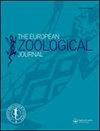攀鲈暴露于水中高浓度铅和镉的积累和应激反应
IF 1.4
4区 生物学
Q2 ZOOLOGY
引用次数: 0
摘要
摘要本研究以铅(Pb)和镉(Cd)作为化学应激源。将健康的绒螯蟹分别暴露于Pb(20、30和40 mg/L)和Cd(3、5和10 mg/L)环境7、14、21和28天,以评估这些金属对绒螯蟹的影响。铅和镉在龙家鲟组织中的蓄积趋势为:鳃>>肝>肌蓄积Pb,肝>>鳃>肌蓄积Cd。内分泌应激反应以血浆皮质醇和葡萄糖水平的变化为特征。铅、镉暴露均引起血浆皮质醇水平显著升高(p < 0.05),血糖水平先小幅升高后急剧下降。根据血浆皮质醇和血糖水平的不稳定变化,可以得出结论,暴露于高浓度的铅和镉不会导致死亡;然而,它对豚鼠的肾间和胰腺活动有不利影响。生物化学变化可作为鱼类应激评估和管理的生物标志物。本文章由计算机程序翻译,如有差异,请以英文原文为准。
Accumulation and response to stress in climbing perch (Anabas testudineus) on exposure to high concentrations of lead and cadmium in water
Abstract In this study, lead (Pb) and cadmium (Cd) were used as chemical stressors. Healthy A. testudineus were exposed to Pb (20, 30, and 40 mg/L) and Cd (3, 5, and 10 mg/L) for 7, 14, 21, and 28 days to assess the response of A. testudineus elicited by these metals. The tendency of Pb and Cd accumulation in the tissues of A. testudineus was as follows: gill >> liver > muscle for Pb and liver >> gill > muscle for Cd. Endocrine stress response was characterized by varying the levels of cortisol and glucose plasma. Exposure to both Pb and Cd caused significantly increase levels of plasma cortisol (p < 0.05), while blood glucose levels slightly increased at the beginning and then decreased sharply. Based on the erratic changes in levels of plasma cortisol and blood glucose, it can be concluded that exposure to high concentrations of Pb and Cd does not cause death; however, it adversely affects the interrenal and pancreatic activities of A. testudineus. Biochemical changes can be used as biomarkers for stress assessment and management in fish.
求助全文
通过发布文献求助,成功后即可免费获取论文全文。
去求助
来源期刊

European Zoological Journal
Agricultural and Biological Sciences-Animal Science and Zoology
CiteScore
3.10
自引率
5.60%
发文量
80
审稿时长
30 weeks
期刊介绍:
The European Zoological Journal (previously Italian Journal of Zoology) is an open access journal devoted to the study of all aspects of basic, comparative and applied protozoan and animal biology at molecular, cellular, tissue, organ, organismal, population, and community-ecosystem level. Papers covering multiple levels of organization and integrative approaches to study animal form, function, development, ecology, evolution and systematics are welcome. First established in 1930 under the name of Il Bollettino di Zoologia, the journal now has an international focus, reflected through its global editorial board, and wide author and readership.
 求助内容:
求助内容: 应助结果提醒方式:
应助结果提醒方式:


